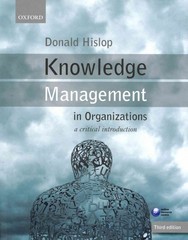Answered step by step
Verified Expert Solution
Question
1 Approved Answer
The following is a Transshipment problem to find model and solver solution: Easley Apparel International is a global manufacturer of clothing items. The company has
The following is a Transshipment problem to find model and solver solution:

Easley Apparel International is a global manufacturer of clothing items. The company has entered a contract with a U.S. retail clothing wholesale distributor to supply men's cork leather and faux leather jackets for the upcoming Christmas season. The distributor operates distribution centers in California and New York. Easley has agreed to deliver the quantities in Table 1 to these distribution centers in late Quanzhou Kenitra Mexico City Regular 20000 8000 15000 Overtime 6000 1000 4000 Quanzhou Kenitra Mexico City Regular $19 $21 $20 Overtime $26 $28 $28 Table 5. Regular and overtime processing capacities (lbs) Table 6. Unit production cost (per jacket) autumn. California New York Cork Jackets Faux Jackets 2700 1900 1800 3000 Table 1. Demand at the distribution centers The production process commences at tanning factories where the cork and faux leather materials are prepared. Following this, materials are transported to one of the manufacturing plants. Subsequently, the finished jackets are shipped to one of the ports in the United States. Finally, the jackets are transported from the ports to the designated distribution centers. Easley Apparel has tanning factories and clothing manufacturing plants to produce leather jackets in China, Morocco, and Mexico. The tanning facilities are in Heyuan (China), Rabat (Morocco), and Oaxaca (Mexico). Table 2 shows the supplies (in pounds) of available leather from each tanning factory. The supply at the tanning factory can be increased by capacity investments, where the cost depends on the size of the capacity expansion. The additional capacity can be used to increase the cork and/or faux leather supply. Table 3 displays the capacity expansion (lbs) and associated costs ($) for supply. For instance, the supply capacity of Heyuan factory can be increased by 8000 lbs if an additional investment of $10,000 is made. This supply increase may be used 2000 lbs for cork and 6000 for faux leather. The manager may choose to keep the capacity at its current level or increase the capacity. In the production of jackets at the plants, 20% of the cork leather and 15% of the faux leather is waste (i.e., it is discarded during the production process and sold for other byproducts). After production, a cork jacket weighs approximately 4 lbs., and a faux jacket weighs approximately 5 lbs. (neither with linings, which are added in the US). For instance, assume that Quanzhou plant processes 12500 lbs. of cork leather and 10000 lbs. of faux leather, using 2500 lbs. of overtime capacity. At the end of the process, Quanzhou plant is ready to ship 10000 (80% of 12500) lbs. of cork jacket and 8500 (85% of 10000) lbs. of faux leather jacket. In other words, 2500 (10000/4) cork jackets and 1700 (8500/5) faux leather jackets will be ready for shipment. Shipments until the manufacturing plants can be made at any level (continuous). However, shipments after the manufacturing plants must have integer values since they represent the number of jackets. Once the leather jackets are produced, Easley transports them to U.S. ports. The available shipping capacity at each port and the transportation costs per pound from the plants to US ports are as follows: Plant Quanzhou Kenitra Mexico City Capacity (lb) Los Angeles $2.5 $1.9 $1.3 20000 US Port New Jersey $2.7 $1.5 $1.2 25000 Georgia $2.4 $1.1 30000 Tanning factories Heyuan Rabat Oaxaca Cork supply (lbs) 13000 6000 7000 Faux leather supply (lbs) 12000 7000 8000 Tanning factories Heyuan Rabat Oaxaca Additional Capacity (lbs) 8000 3000 4000 Cost ($) 10000 5000 6000 Table 2. Regular capacities at the tanning factories Table 3. Cost of capacity expansion Table 7. Unit transportation costs to ports and port capacities The transportation from the U.S. ports to the two distribution centers are done via trucks. Each truck has a capacity of 1000 jackets. The costs of operating a truck between US ports and distribution centers are as follows. One may assign more than one truck between a US port and distribution center, where the Next, leather is shipped from tanning factories to manufacturing plants in Quanzhou in China, Kenitra in Morrocco, and Mexico City in Mexico. Table 4 gives the costs per pound, in U.S. dollars, for tanning the uncut leather (production) at tanning factories and shipping to manufacturing plants. operating cost of each truck must be paid. US Port Los Angeles New Jersey Georgia Distribution Centers Tanning factories Heyuan Rabat Oaxaca Quanzhou $3 $11 $8 Manufacturing Plants Kenitra $7 $6 $8 Mexico City $6 $9 $5 California $3,000 $20,000 $13,000 New York $20,000 $2,000 $5,000 Table 4. Cost of tanning and shipping Table 5 shows the regular processing capacities at each plant. The production capacities can be increased via overtime, and overtime capacities are also given in Table 5. Note that the cost of jacket production ($ per jacket) is the same for cork and faux leather as shown in Table 6. 1 Table 8. Unit truck costs from US ports and DCS Easley Apparel wants to determine the least costly production and shipment that will meet the demand at the U.S. distribution centers. a. b. Develop a transshipment model for Easley Apparel that will result in a minimum cost solution (production, transportation, and fixed investment costs). Clearly define decision variables and formulate objective function and constraints. Solve the problem with Excel Solver and submit your file. 2
Step by Step Solution
There are 3 Steps involved in it
Step: 1

Get Instant Access to Expert-Tailored Solutions
See step-by-step solutions with expert insights and AI powered tools for academic success
Step: 2

Step: 3

Ace Your Homework with AI
Get the answers you need in no time with our AI-driven, step-by-step assistance
Get Started


